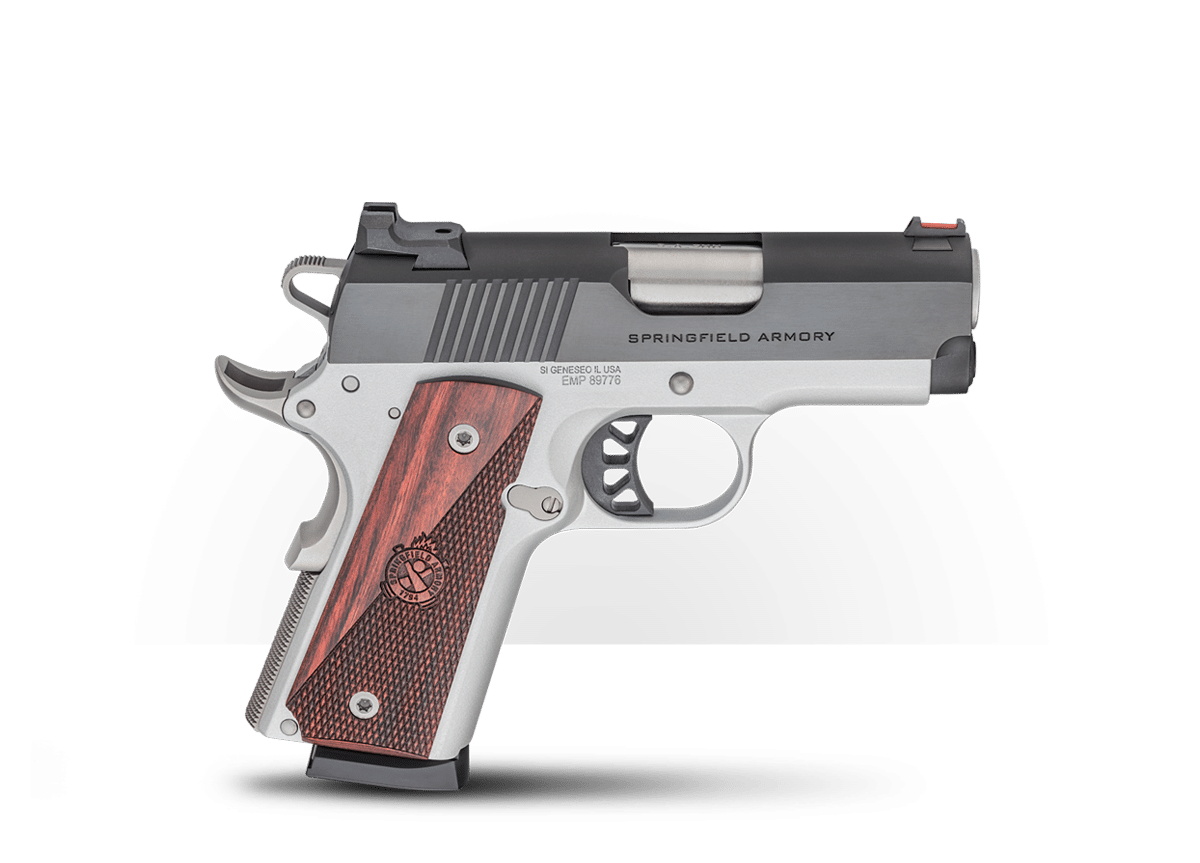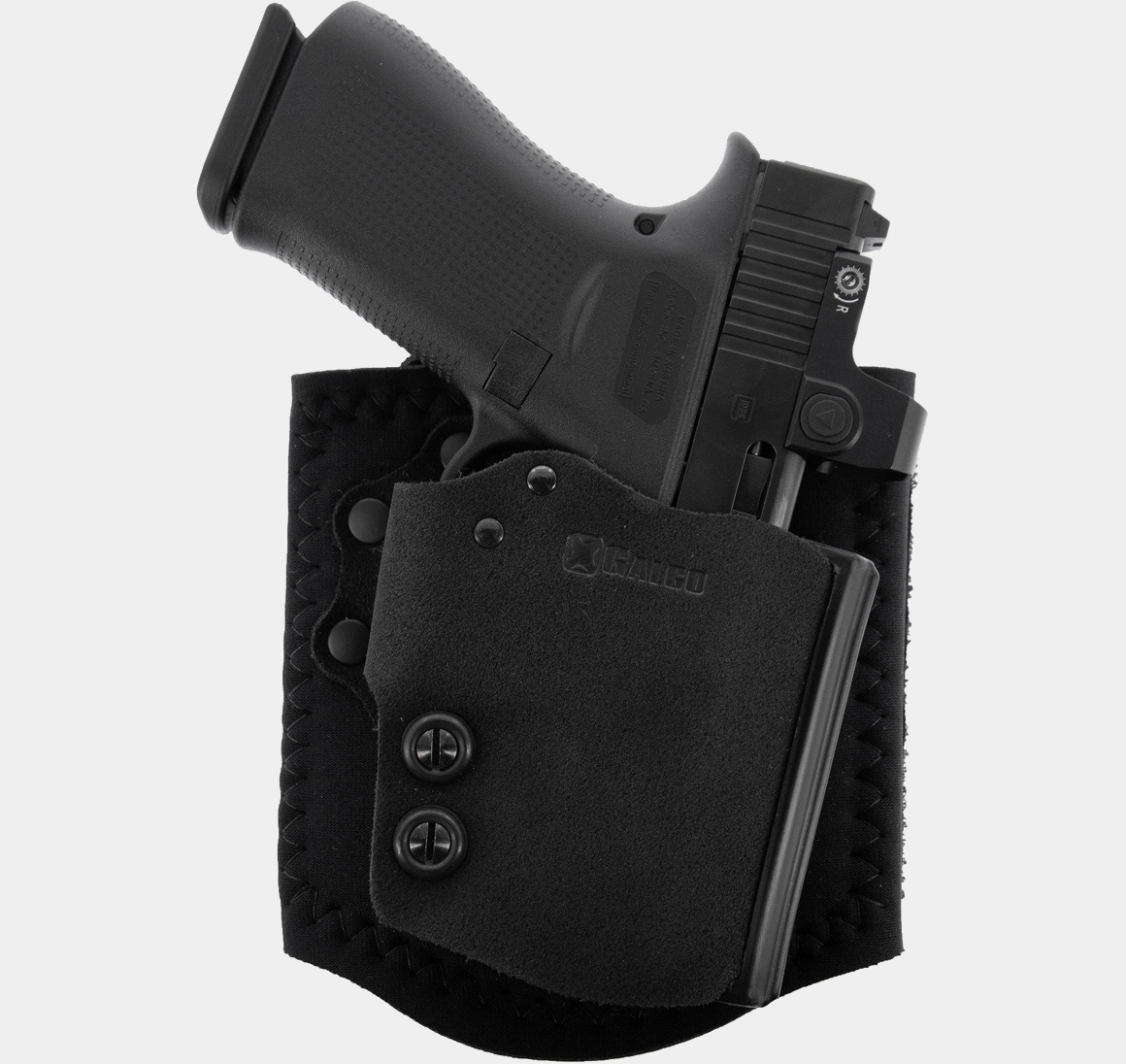Ayoob: Is Ankle Carry a Good (or Bad) Idea?
December 27th, 2023
6 minute read
The ankle holster is loved and hated. Many who hate it don’t understand why and how to use it.
It’s one way to carry with tucked-in shirt in a non-permissive environment discreetly. It’s one of the fastest accesses to drawing while seated, or down on your back. In the latter situation, your body weight is no longer on your legs, and you can easily snap your foot up toward the reaching hand. I’ve always seen it as much better for a “back-up” gun than for primary carry.
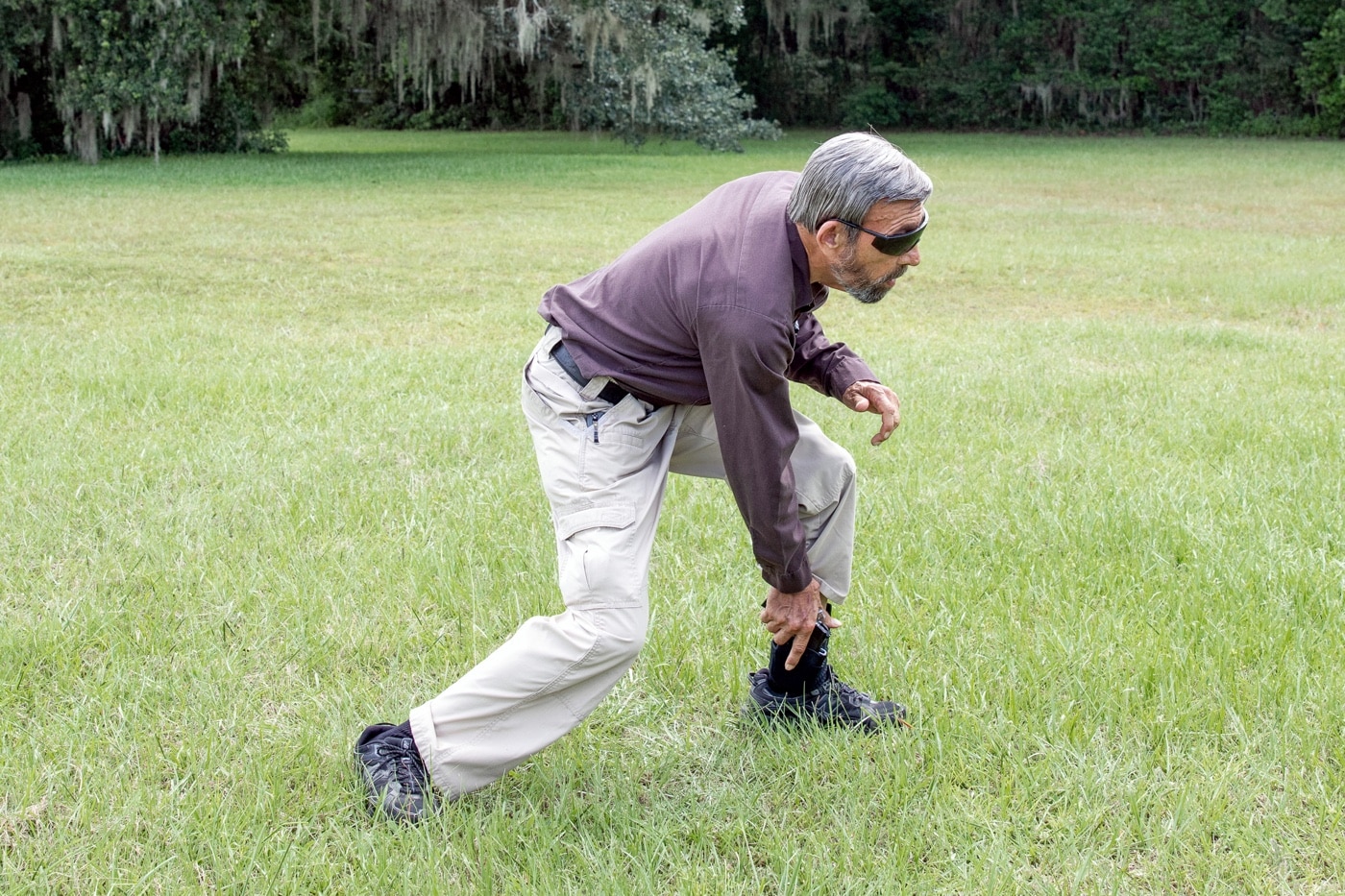
Of course, it has downsides. For drawing from standing (or, God help you, trying to do it while running) it would be hard to imagine a worse place to have to reach for. The gun is inches above the snow, mud, and sand that you might be kicking up: an “ankle gun” has to be inspected and cleaned much more frequently than something carried in a conventional belt holster.
If you have circulation problems, something tight around your ankle may be contra-indicated. The same is true if arthritis hits your ankle area, the factor that took me away from ankle carry after many years of the ankle holster being something I put on almost as routinely as my undershorts.
Selecting a Holster/Gun/Pants Combination
Yes, I mentioned pants. You’ve got to be able to get to the damn thing. Peg-bottom pants or currently popular skinny jeans might require a tactical knife to get to your ankle holster before you can draw, and none of those will conceal the holstered handgun.
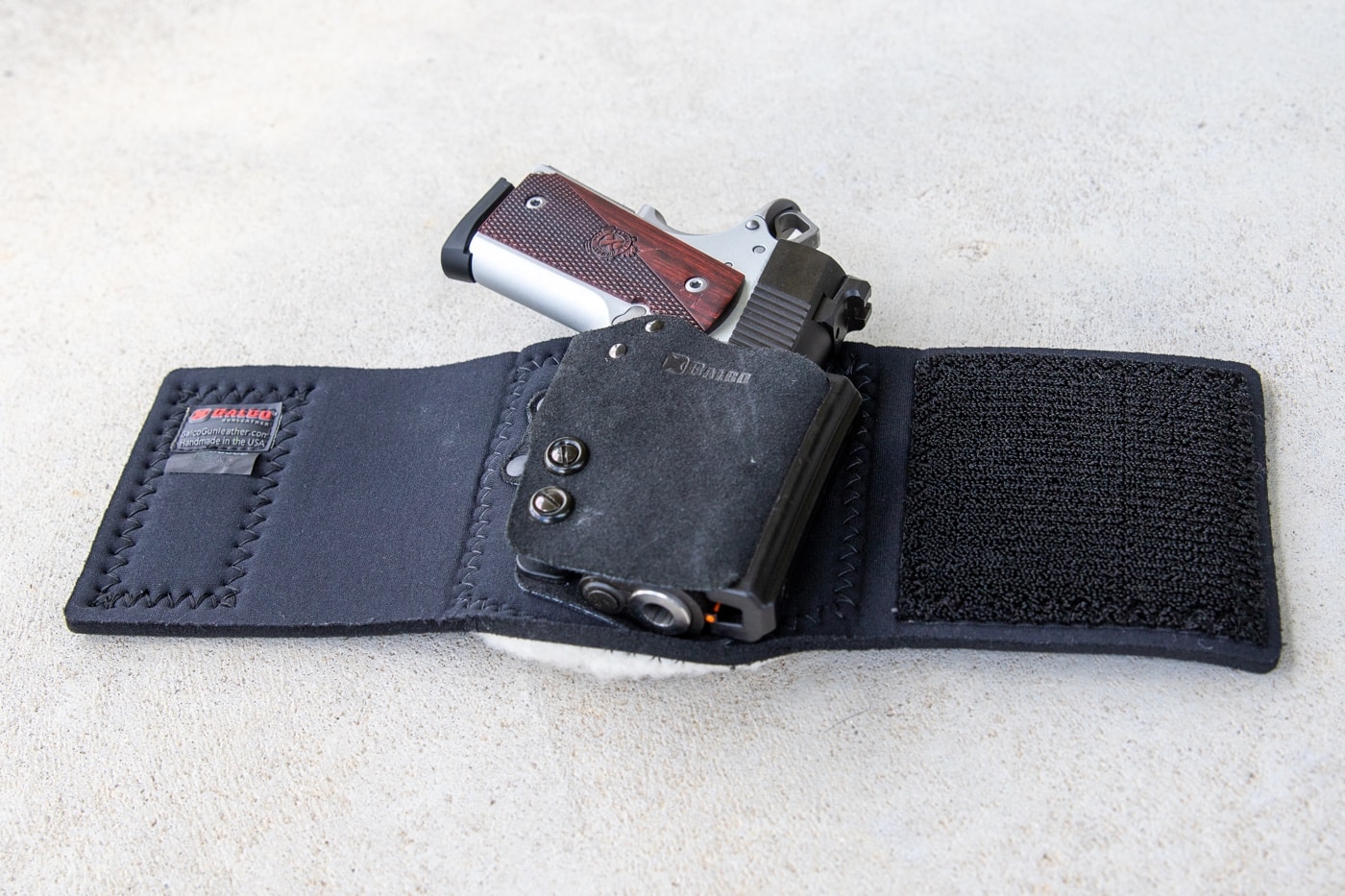
The cuff shape and drape of the traditional “men’s sack suit” works well. Ditto police uniform pants, and more so BDUs. The bell bottoms cuffs of the 1970s, and today’s “flares” were as if they were designed for quick access to ankle holsters. You prefer jeans? “Boot cut” is the answer.
The holsters themselves? You want some cushioning for the ankle bone. Just a thumb break safety strap seems to work great until you are running through brush, grappling with an opponent on the ground, or simply cross your ankles the wrong way and unintentionally pop the strap.
Finely boned holsters are good, but not 100% secure if something snags on the gun as you are rolling, fighting, or doing other extreme exertions you weren’t expecting on the day you strapped on the ankle gun. The ideal might be a tight fit and a thumb-break.
Gun selection? The heavier the handgun in the ankle holster, the more momentum gets generated for it to bounce out during strenuous activity such as foot pursuits. The bigger the pistol, of course, the greater the bulge: remember, the ankle holster is for concealed carry.
Never forget that exposure to dust and grit factor. “Hammerless” revolvers do the best here. With autoloaders, you don’t want a finely-fitted .380 of yesteryear that can choke on accumulated grit after a shot or two; something with “service pistol parts tolerance” and reliability such as the Springfield Armory Hellcat is a more desirable choice. I also have tried out a Springfield Armory Ronin EMP 3” in this carry mode as well.
Donning the Ankle Holster
Secrets of the ankle holster ninjas: First, put on the empty holster snugly (but of course, not tight enough to cut off circulation or cause discomfort) and then insert the handgun. Countless years of collective experience show that this minimizes wobble and shifting of position.
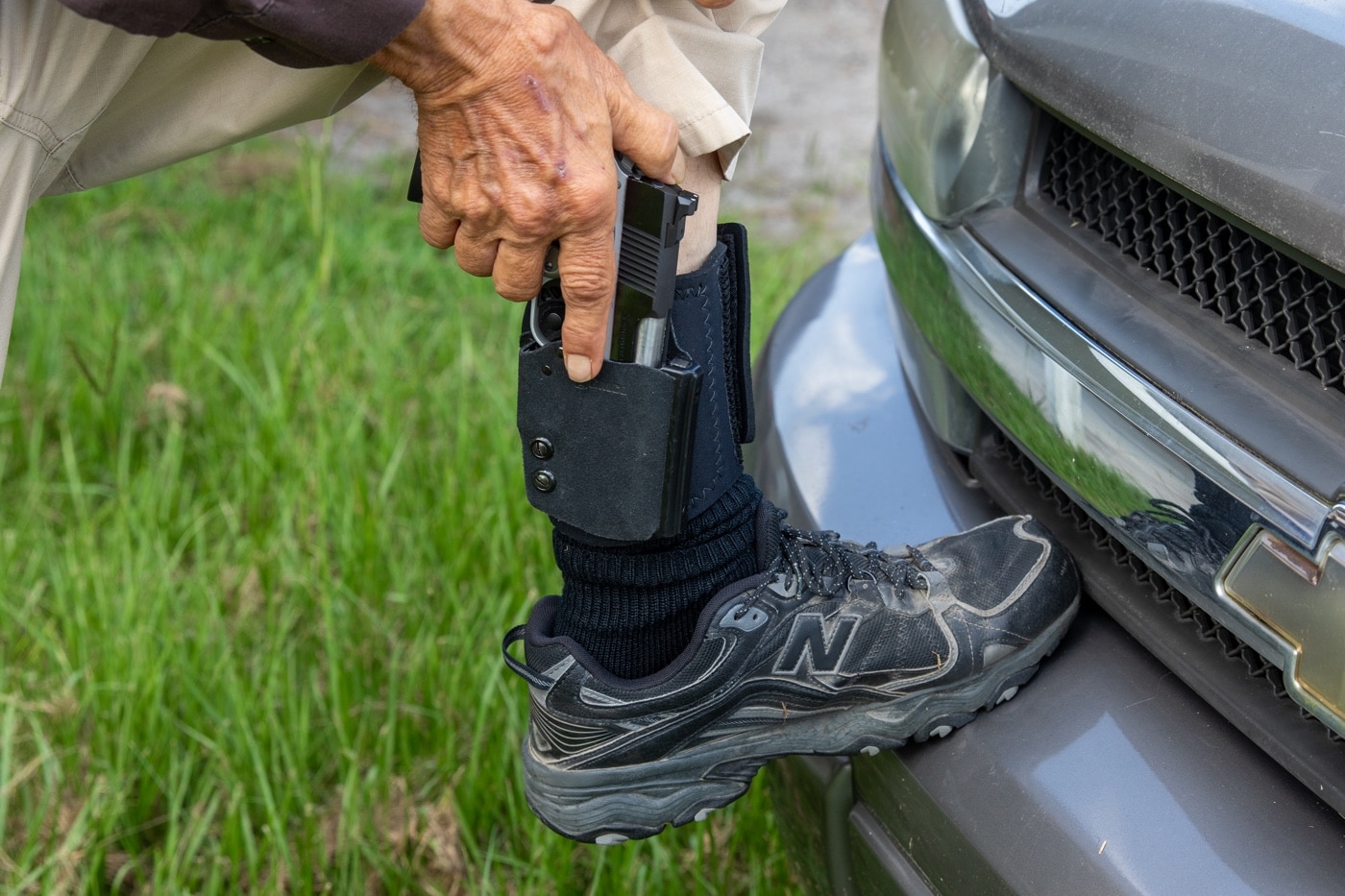
Next, for concealment, pull the sock up over the holster, but below the part of the holster from which the gun protrudes. When you sit down in office or restaurant or wherever, the pants cuff can ride up and expose the bottom of what is obviously a holstered gun, and the weapon is no longer concealed. With the sock pulled up, the exposed part just looks like a loose, baggy sock.
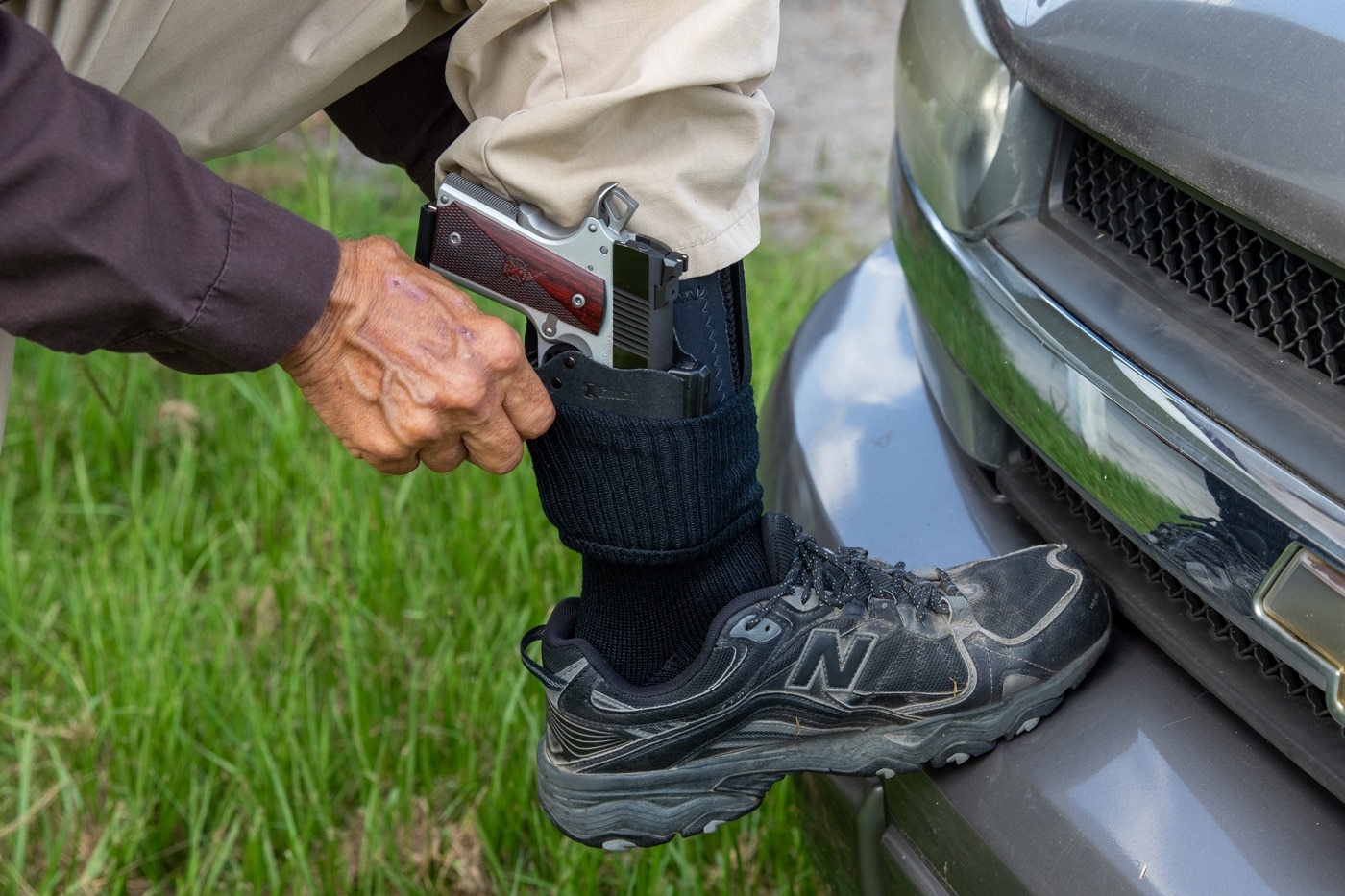
The Fashion Police may issue you a warning, but the self-appointed Gun Police won’t start screaming, “Oh my God, that person has a gun!” Yes, it will stretch out your socks and increase your hosiery bill, but it will cost much less than legal fees for exposing a gun someplace where exposed carry is not legal.
Performing the Draw
Most of us experienced with ankle holsters recommend placing the gun on the ankle opposite the gun hand, butt to the rear. Back around 1960, quick-draw expert and master holster-maker Chic Gaylord recommended standing on the non-holster leg and lifting the gun side leg into the air. Problem: most of us can’t do that in a condition of calmness, let alone during a fight or flight response, without losing balance. I can’t recommend this “stork draw.”
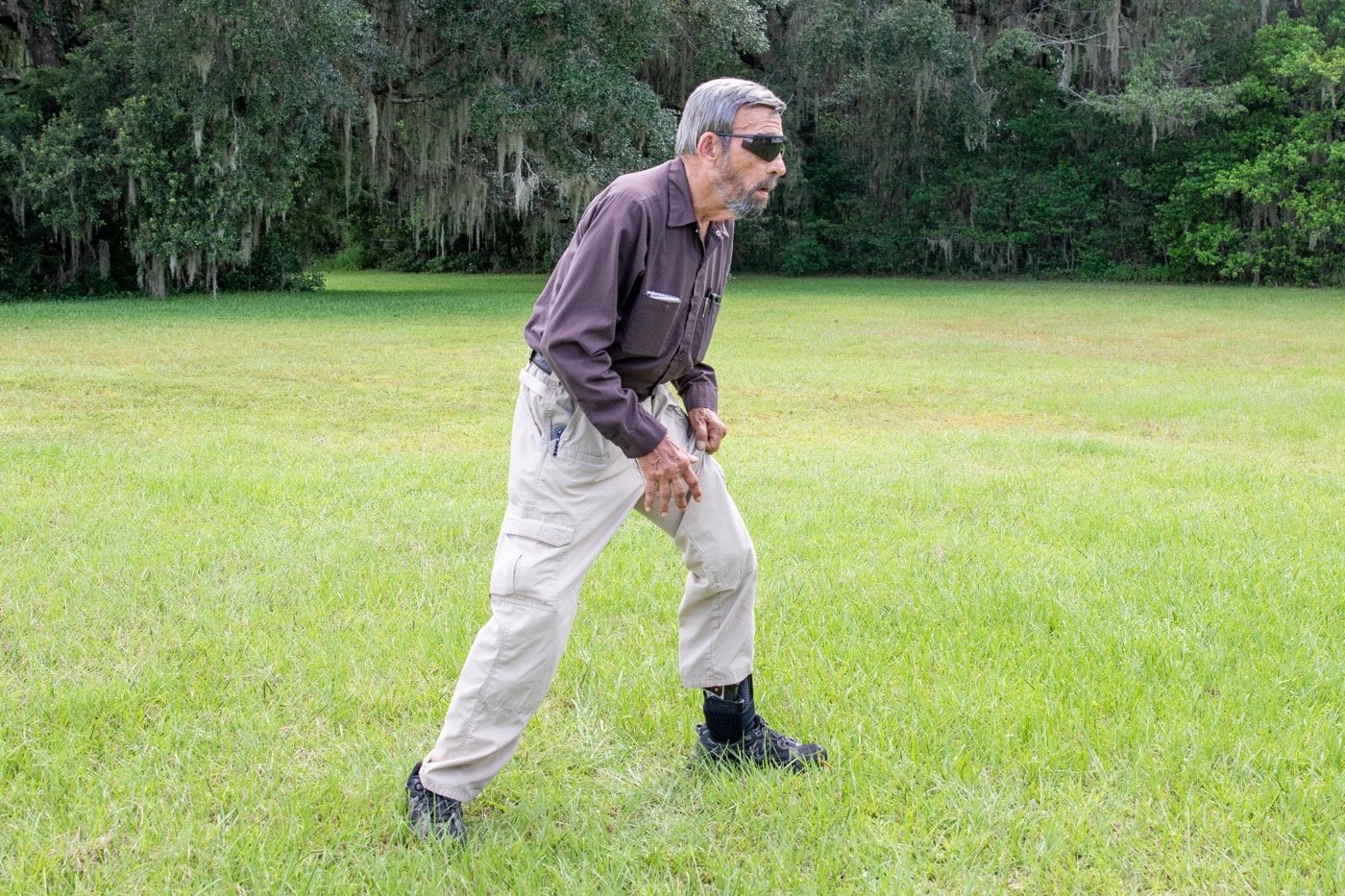
Some schools and police academies have taught “kneel on your gun hand side knee with the ankle holster leg vertical at the calf, and then draw.” That can work, but now you are somewhat locked into position and have lost mobility.
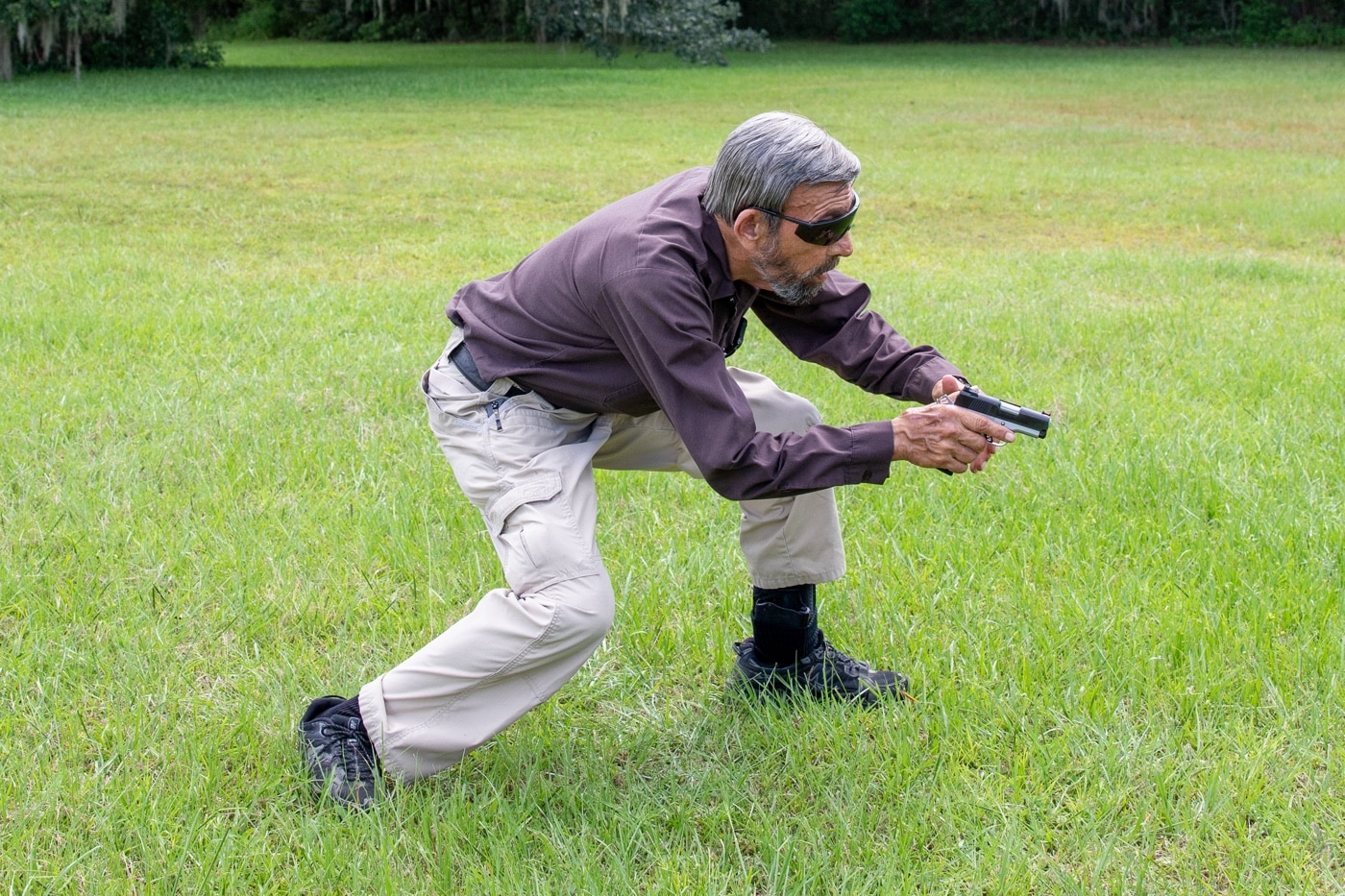
The best I can offer you is the “cover crouch/speed crouch” I came up with in the 1970s for getting down to the same height as high kneeling behind low horizontal cover without sacrificing mobility. It turns out to be optimal for ankle draw. First, grab a fistful of trouser fabric with your non-dominant hand and pull upward to clear the holster, then bend both knees deeply until your backside is level with your knees. Otherwise, once the knees bend it’s going to be awfully hard to pull fabric up over your calf to access the ankle holster.
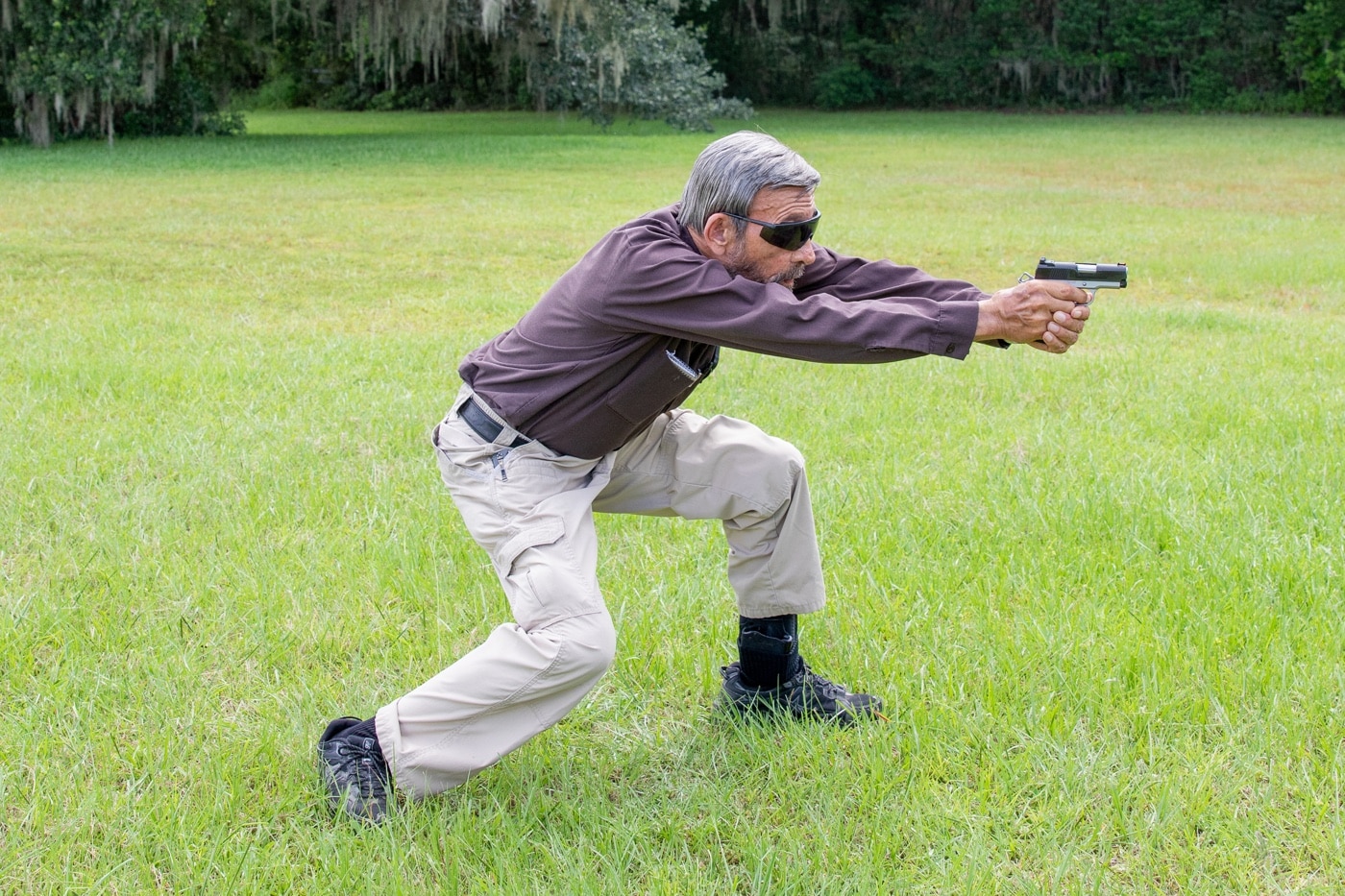
Then, step back and/or sideways with your non-holster side leg. Reason: it would be foolish to move your holstered gun away from your reaching hand.
Now, simply draw. You can fire if you have to from the low cover crouch, one-handed or –two, or if time and circumstances permit rise to your favorite standing position.
In Summary
The ankle holster is not my choice for primary carry. That said, for some people in some circumstances with some wardrobes, it may be the only way they can still be armed at all and both stay legal and keep their jobs.
For reasons stated above, the ankle holster is particularly suitable for back-up. It is one more tool for safety, and as always, we must tailor the tool to the task at hand. The trick is picking the correct tool for the given, predictable task.
Editor’s Note: Please be sure to check out The Armory Life Forum, where you can comment about our daily articles, as well as just talk guns and gear. Click the “Go To Forum Thread” link below to jump in and discuss this article and much more!
Join the Discussion
Featured in this article
Continue Reading
Did you enjoy this article?

 307
307




